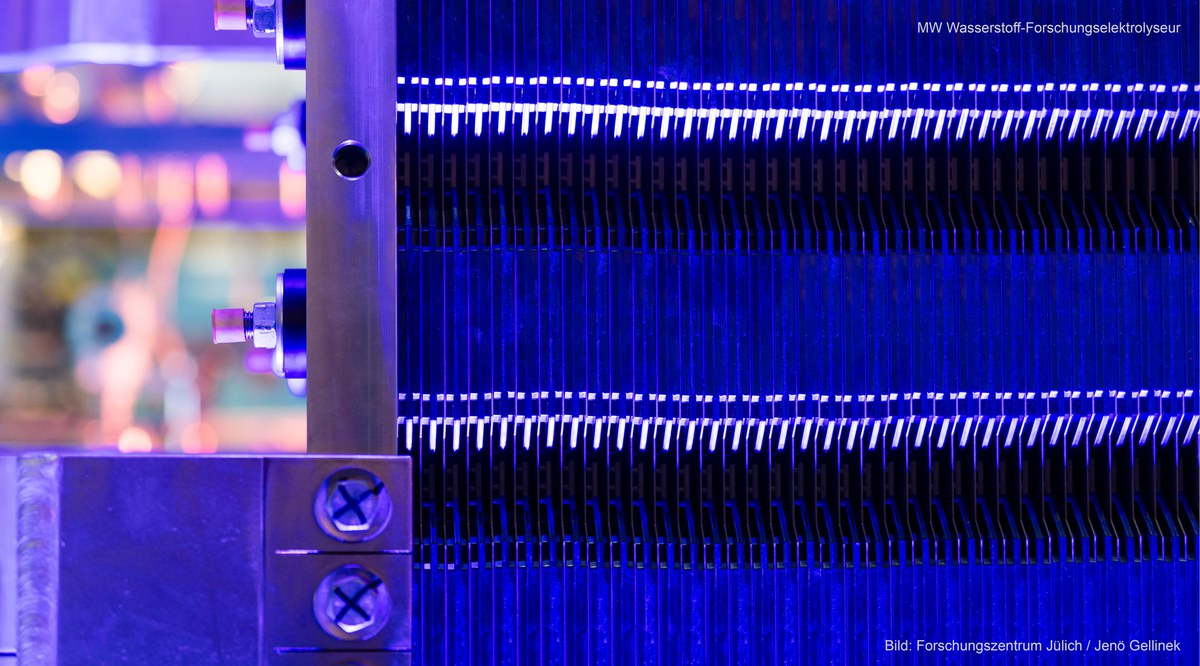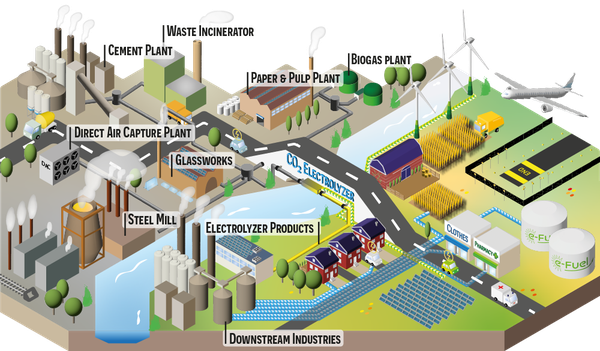Vision
Our vision is a climate-neutral society in which the continuous supply by renewable electricity sources is secured with the help of energy storage and converters, while the climate killer CO2 is returned to a sustainable circular economy as a renewable resource.
In view of the climate crisis and social and economic growth, the energy transition is becoming an increasingly urgent concern. Germany in particular, as a world-famous and established innovation location, and the Rhineland region as a historic energy region and industrial center are in demand when it comes to tackling these challenges with cutting-edge research.
A long-term and sustainable climate-neutral society and economy require the widespread use of renewable electricity sources. In order to simultaneously ensure a stable, secure energy supply and maintain the competitiveness of the German economy, energy-efficient, resource-saving, and cost-effective energy storage and conversion technologies are essential.
As different as renewable power sources such as solar, wind, and hydropower may be, they have one thing in common. They are neither arbitrarily available, controllable nor constant energy resources but are subject to random fluctuations. In times of excess electricity production, this energy must either be stored or converted into other energy carriers or valuable materials in order to compensate for the deficits in times of low electricity production or high electricity consumption.
In contrast to the fossil, stable, centralized energy supply, the decentralized, sustainable supply of renewably generated electricity also places new demands on the energy supply system. First and foremost, a rethink is necessary in the area of directly electrifiable energy sectors. In addition, renewable electricity sources as well as energy storage and conversion systems must be coupled and integrated as energy-supplying sectors with the energy consumer sectors of electricity, heat, mobility, and industry, which in parts can only be electrified indirectly. Only through sector coupling, sustainable energy sources can be used optimally and greenhouse gas emissions can be avoided.
In addition to the energy supply for society and civil life, the economy and industry must of course also be taken into account as a significant factor in greenhouse gas emissions. Fossil resources not only play a role as energy sources but also as raw materials for the production of everything from plastics to cosmetics and pharmaceuticals. In order to achieve climate neutrality, industrial processes must be changed and integrated into sustainable value chains. A promising approach is the recovery of the greenhouse gas CO2 as a renewable raw material for organic raw materials such as methane, methanol, and higher-value hydrocarbons. Emissions of the climate killer CO2 cannot be completely avoided. Returning our CO2 emissions to a sustainable circular economy, in which CO2 is also broken down and recycled, offers an opportunity to still significantly reduce our CO2 footprint.
Mission
At IET-1, our goal is to investigate and understand the fundamental processes in energy storage and converters from the atomic to the industrial scale in order to use these findings to improve or develop new technologies.
We at IET-1 see our mission as contributing to the development of new key technologies for the energy transition. Our expertise lies in the areas of electrochemical energy storage and converters. We continue to improve current technologies and at the same time research innovative, promising new approaches.
The rechargeable lithium-ion battery has been commercially available since the end of the last century and has now become an integral part of our everyday lives. However, there is still room for improvement in areas such as lifetime, safety, performance, and energy density, as well as material availability and cost reduction. We research charge transport and which processes in the battery cause the battery to age, lose capacity or catch fire. We also test alternative material classes for their suitability as reliable electrode or electrolyte materials. We use this knowledge-based research specifically to further optimize the properties and performance of lithium-ion batteries and to make them fit for future-proof applications such as mobility and fast charging or stationary storage.
New concepts still in development such as solid-state batteries, zero excess lithium batteries, and batteries with alternative charge carriers such as sodium, zinc, iron or silicon open up interesting perspectives but also electrochemical, mechanical, and engineering challenges in practical and commercial implementation, which we address with our research.
For a flexible, decentralized energy supply and global energy logistics, alternative energy carriers such as hydrogen and its derivatives are necessary in addition to batteries. The energy is stored as chemical energy through the electrolysis of water in hydrogen. To recover electricity, the hydrogen is converted back into climate-neutral water in fuel cells. There are different electrochemical approaches such as acidic electrolysis with proton exchange membranes, alkaline electrolysis with anion exchange membranes, as well as high-temperature electrolysis with solid oxides and the corresponding fuel cells. Each of these technologies has its strengths and weaknesses in the areas of performance, efficiency, lifespan, material cost, and sustainability. At IET-1, we investigate the fundamental processes in fuel cells and electrolyzers in order to specifically address and eliminate the individual weaknesses of the different technologies, and test the technologies at the system level up to the megawatt range in order to carry out comprehensive technology de-risking.
In addition to hydrogen, ammonia or hydrocarbons are also available as alternative energy carriers that store energy through the electrolysis of nitrogen and carbon dioxide. Ammonia and hydrocarbons such as methane, lower alcohols, and acids also offer the advantage that they can be easily transported over long distances and are also popular basic chemicals for the chemical industry. Even if the development of CO2 and nitrogen electrolysis is not yet as advanced as water electrolysis, these technologies will still play a crucial role in the decarbonization of the energy and heat sector as well as in the defossilization of the chemical industry. The utilization of CO2 will be crucial in order to replace fossil energy carriers with CO2 derivatives as resource for basic chemicals and to establish a sustainable carbon cycle. We at IET-1 want to make a decisive contribution to this goal with our research.
In order to use energy storage and converters in a resource-saving manner, optimal utilization with a minimum total capacity must be aimed for. Given our complex, demanding energy landscape, which includes electricity, heat, mobility, and industry, this is a very complex question. As part of research topics such as LLEC, we deal with battery and electrolysis management systems as well as sector coupling.
In all of these areas we are faced with the overarching challenge of bringing time-consuming, fundamental research quickly and efficiently to practical, industrial use. We tackle bridging the so-called Technology Readiness Levels (TRL) as part of our innovation spaces, which optimally support and accelerate the transfer of innovations to market launch.




